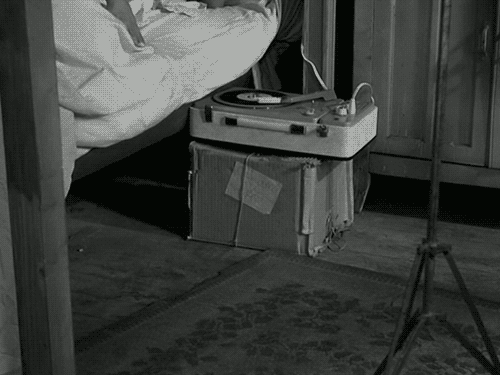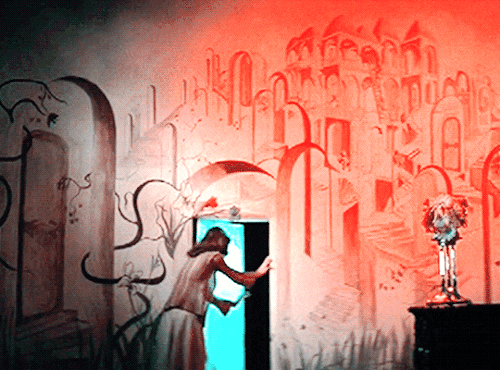Dungeness Crab Megalopa Research
Dungeness crab Megalopa Research
Hello fellow POE students! The host organization I work with is known as Pacific Northwest Crab Research Group (PCRG). They are a research group whose main function is to find ways to sustainably manage Dungeness crabs in the Pacific Northwest. Within PCRG, my specific role is to monitor Dungeness crab megalopae (larva) abundances. I am able to do this using a tool called a light trap. These traps are programmed to essentially “fish” for megalopae for two nights. Once the two nights are up, I check the traps and count how many megalopae they have caught.
Through working at my internship, I have experience and learned some really interesting things. I would say the most intriguing thing I’ve learned to far is how to properly ID certain crab megalopa species. It is fun to learn because it involves getting a closer look at the larvae under a microscope and getting an idea of the morphological differences between all the species. This aligns with my future goals because I want to work in species conservation after college, and it is hard to know how to conserve certain species without first knowing how to ID them.
The biggest challenge I’ve faced in my internship so far is coming up with an effective way to address my research question. My research question involves comparing Dungeness crab megalopa abundances to other crab species megalopa abundances in order to predict interspecies competition. However, other crab megalopa species almost always appear in the trap at much smaller numbers than Dungeness crab megalopae. In order to better address the research question, I have decided to not only compare the megalopa species abundances at the light trap, but I will also compare the juvenile species abundances in the nearshore habitats. This will give me a better idea of which crab species are able to successfully outcompete other crab species while settling in nearshore habitats.
-Brendan Beaudette
Here are a couple microscopic photos I took in the lab. One photo is a hermit crab megalopa and the other photo is a mussel crab juvenile.


Thank you for reading my blog post, I will wrap things up with one question for my readers. Do you think interspecies competition has any correlation to Dungeness crab decline, or do you think the decline is caused by other phenomena?
More Posts from Melancholianarcissus and Others

What are your thoughts on the ending of the green knight? Little disappointed with it.
Ahhh thank you, my anonymous hero, for giving me the opportunity to ramble about this movie. I saw it last night and I’ve been thinking about it pretty nonstop. Disclaimer before I get into this: I’m not a proper medievalist. I am, however, an English student with a focus on British literature, so I’ve read a few different translations of the original source material and studied it fairly in-depth.
That being said, my first reaction to The Green Knight was… well, that it’s not really Sir Gawain and the Green Knight. Which is fine! Mostly. Every movie adaptation changes things from the source, but this one changed so much, so drastically, that I can’t really think about it as the same story. In the original poem, Gawain is a good (if inexperienced) knight who consistently keeps his promises and retains his honor right up until the very end of the story, when he lies about the green belt and refuses to give it to his host, Bertilak. The storyline of the movie seems to flip this? Gawain doesn’t start off as a good knight, or even as a knight at all, and in the movie he consistently fails to live up to knightly virtues throughout his quest. However, at the end he succeeds where the original Gawain did not, and voluntarily removes the belt (after that memorable flash-forward sequence).
To me, this is a fundamentally different story from the original. And I’m not mad about the character changes! A movie has to create a self-contained character arc in a way that the anonymous Pearl Poet did not have to. So to me, the movie seems to present the story of someone who must learn to accept death. Death (and rebirth) is certainly a major theme in the original, too, but I’ve always interpreted the og poem as placing more importance on honesty, chivalry, chastity, humility, and shame.
So the movie is telling a different story, with different themes. With that in mind, I guess it could make sense to skim over the 3 days of Christmas games and the kissing exchange in the original poem. However, even if it does make sense, I’m mad about it because I really liked the Christmas games and the kissing exchange in the original poem. I would’ve swapped out Gawain’s existential flash-forward sequence for a few good kissing exchanges in a heartbeat.
That being said, with the story the movie seems to be trying to tell I’m not terribly mad at the ending? Maybe? I’m still conflicted. I suppose the problem is that the themes feel very confused to me. The strongest one I can latch onto is the inevitability of death/ the importance of embracing the natural cycle of the world. With that in mind, Gawain’s vision of the future could be his realization that his life will, eventually, end, no matter what he does in the green chapel. His decision to remove the belt and face the green knight without its protection can then be seen as an acceptance of death, and the decision to die with honor and dignity. I’m not unhappy with where his character arc ends up here, considering he’s been framed as a screw-up since the beginning of the movie, but I’m left repeating #notmygawain because this is, again, a fundamentally different character arc from the original story. Again, I understand why they changed Gawain’s character for a movie. I just don’t like the changes very much.
I’m also not a huge fan of the cliffhanger (although I did love the final “Green Knight” title card!) mostly because all elements of cliffhanger are removed if you’ve actually read the original poem (or even just checked Wikipedia). Like, we know that the knight doesn’t kill Gawain. It’s not a new story. Although? I suppose this version of it is. So who’s to say whether he dies or not? I suppose the cliffhanger could work in the context of this adaption because, if we’re going with the ‘accepting death’ theme (which I’m still not sure about!), the outcome of Gawain’s decision doesn’t matter as much as the decision itself. We’ve seen him drift around the kingdom for almost 2 hours, breaking chivalric code, lying to his host, and overall being a pretty self-absorbed knight who’s terrified of his own mortality. The decision to accept death and embrace honor is the culmination of a character arc and seems like a fitting end to the movie. But I do wish we had gotten to see Gawain work more towards this growth through the events of his quest, rather than simply achieve it through a flash forward in time.
And I still think they should have left in the full three days of Christmas games.
Overall? This adaption was beautiful. Dev Patel is hot. And, more importantly (to me), this adaption felt right. The blending of Catholic imagery with pagan Celtic influences, the weird vibes, the use of title cards and the vaguely disconnected adventures was fun, and it felt more “Arthurian” than any other round-table-related movie I’ve ever watched. But I’m still not entirely sure what the story was trying to say, or if it said it. If you’re going to deviate from the source material this much, it’s my opinion that you’ve got to do it for a clear reason, to make a clear point, not just to subvert audience expectation. I’m not quite sure what the point of these changes were, or how the ending of the movie revealed the movie’s core thesis. It felt a bit more like a “gotcha!” from the director than a genuine end to Gawain’s story.
But, I mean, at least Dev Patel was hot.







Abraham Eleazar, Uraltes chymisches Werk, 1734
I go absolutely Nuts for old fashioned disease names. imagine writing a letter to your friend telling them that you've been gripped by horrors daily since becoming afflicted with the king's evil. the victorians had no chill whatsoever


STINGRAYS CAN MAKE CLICKING SOUND, ACCORDING TO NEW RESEARCH
New evidence, from oncidentally recorded observations of sound production obtained in the Magnetic Island on the Great Barrier Reef, Australia, shows that the mangrove whipray (Urogymnus granulatus) and the cowtail stingray (Pastinachus ater) can actively produce sounds. Juvenile mangrove whiprays appear to make loud clicking noises as an social behaviour related to fighting, either to warn off and startle predators or to signal to other nearby juveniles to aggregate in defense. Though it is clear that elasmobranchs, such as sharks, rays, and skates, can hear and respond to sounds in various ways, until now, there have been no confirmed examples of active sound production by this group in the wild.
The exact mechanism of sound production remains unclear but appears to be similar in both species. In all recordings, contractions of the spiracles and associated gill openings are visible simultaneously with theclicking sounds, indicating that sounds may beproduced through fast contractions of the cranial and gill area.
Photo: Juvenile mangrove whiprays displaying a typical high tide group overlapping behavior, by José Javier Delgado Esteban. Whale Nation Studio 2018–2023.
Video showing mangrove whipray emitting sounds
Reference (Open Access): Fetterplace et al., 2022. Evidence of Sound Production in Wild Stingrays. Ecology










some of my favorite spooky ladies + flowers and bouquets 🌹💐
What if... you wear a black coat, learn foreign languages and the English literature, listen to the most beautiful songs in the world and... we're in love?..










Michael Winterbottom said DRINK IT IN GIRLS!
I think what I find most attractive about Dark Academia is the amount of unfiltered passion present throughout the whole aesthetic. Its all or nothing, no matter how small a task is; whether writing or painting or studying, or hell, even my morning cup of coffee seems to be deeper and bigger than just a morning routine, its fuel to help me achieve my dreams, a foundation stone for the castle that is the rest of my life.
As someone who struggled for years to find a reason to be passionate, to find a reason to enjoy the little things like my morning cup of coffee, to actually believe I could be more than just a insignificant speck in the vast universe, dark academia has become a lifeline to tether myself to. I didn't believe I would live past 18. Now I'm working toward a career in a field I'm passionate about, and I want to live.
-
 melancholianarcissus reblogged this · 1 year ago
melancholianarcissus reblogged this · 1 year ago -
 swimmingprincessbouqet liked this · 1 year ago
swimmingprincessbouqet liked this · 1 year ago -
 evamariaburns liked this · 2 years ago
evamariaburns liked this · 2 years ago -
 cheezbot liked this · 2 years ago
cheezbot liked this · 2 years ago -
 brendan-beaudette reblogged this · 2 years ago
brendan-beaudette reblogged this · 2 years ago
